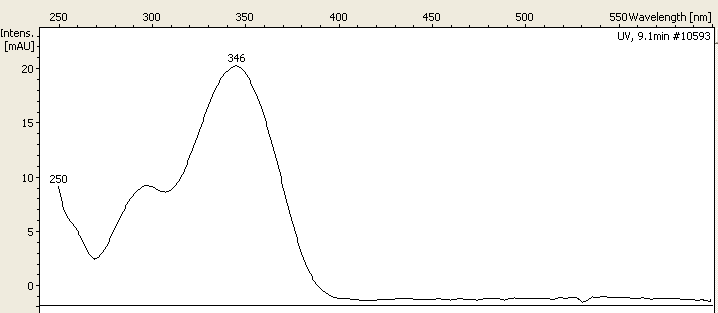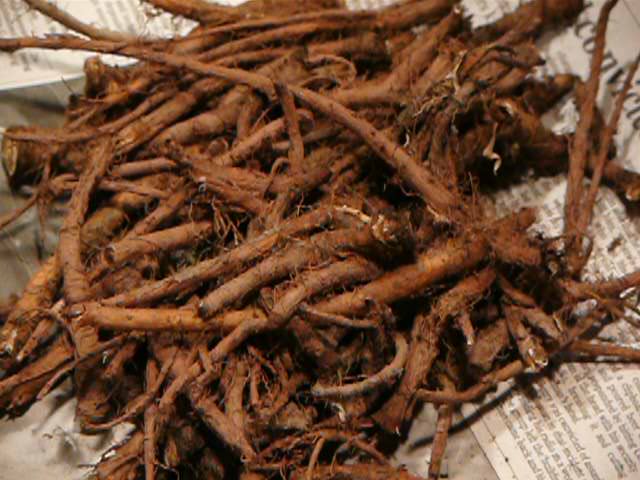|
Esculin
Aesculin, also called æsculin or esculin, is a coumarin glucoside that naturally occurs in the trees horse chestnut (''Aesculus hippocastanum''), California buckeye (''Aesculus californica''), prickly box (''Bursaria spinosa''), and daphnin (the dark green resin of ''Daphne mezereum''). It is also found in dandelion coffee. Medical uses As medication, aesculin is sometimes used as a vasoprotective agent. Aesculin is also used in a microbiology laboratory to aid in the identification of bacterial species (especially ''Enterococci'' and ListeriaQadri, S. M., Smith, J. C., Zubairi, S., & DeSilva, M. I. (1981). Esculin hydrolysis by Gram positive bacteria. A rapid test and it's comparison with other methods. Medical microbiology and immunology, 169(2), 67–74. https://doi.org/10.1007/BF02171773 . PMID 6783825). In fact, all strains of Group D Streptococci hydrolyze æsculin in 40% bile. Aesculin hydrolysis test Aesculin is incorporated into agar with ferric citrate and bile sa ... [...More Info...] [...Related Items...] OR: [Wikipedia] [Google] [Baidu] |
Bile Aesculin Agar
Bile Esculin Agar (BEA) is a selective differential agar used to isolate and identify members of the genus ''Enterococcus'', formerly part of the "group D streptococci" (enterococci were reclassified in their own genus in 1984). Composition and process Bile salts are the selective ingredient, while esculin is the differential component. ''Enterococcus'' hydrolyze esculin to products that react with ferric citrate in the medium to produce insoluble iron salts, resulting in the blackening of the medium. Test results must be interpreted in conjunction with gram stain morphology. Uses Bile Esculin Agar is used primarily to differentiate ''Enterococcus'' from ''Streptococcus''. Members of the genus ''Enterococcus'' are capable of growing in the presence of 40% bile (oxgall) and hydrolyzing esculin to glucose and esculetin. Esculetin combines with ferric ions to produce a black complex. For some purposes, certain bacteria are able to hydrolyze aesculin Aesculin, also called æsculi ... [...More Info...] [...Related Items...] OR: [Wikipedia] [Google] [Baidu] |
Dandelion Coffee
Dandelion 'coffee' (also dandelion tea) is a tisane made from the root of the dandelion plant. The roasted dandelion root pieces and the beverage have some resemblance to coffee in appearance and taste, and it is thus commonly considered a coffee substitute. Dandelion root is used for both medicinal and culinary purposes and is thought to be a detoxifying herb. History The usage of the dandelion plant dates back to the ancient Egyptians, Greeks and Romans. Additionally, for over a thousand years, Chinese traditional medicine has been known to incorporate the plant. Susanna Moodie explained how to prepare dandelion 'coffee' in her memoir of living in Canada, ''Roughing it in the Bush'' (1852), where she mentions that she had heard of it from an article published in the 1830s in ''New York Albion'' by a certain Dr. Harrison. Dandelion 'coffee' was later mentioned in a '' Harpers New Monthly Magazine'' story in 1886. In 1919, dandelion root was noted as a source of cheap 'coffee' ... [...More Info...] [...Related Items...] OR: [Wikipedia] [Google] [Baidu] |
Aescin
Aescin or escin is a mixture of saponins with anti-inflammatory, vasoconstrictor and vasoprotective effects found in ''Aesculus hippocastanum'' (the horse chestnut). Aescin is the main active component in horse chestnut, and is responsible for most of its medicinal properties. The main active compound of aescin is β-aescin, although the mixture also contains various other components including α-aescin, protoescigenin, barringtogenol, cryptoescin and benzopyrones. Evidence suggests that aescin, especially pure β-aescin, is a safe and effective treatment for short-term treatment of chronic venous insufficiency; however, more high quality randomized controlled trials are required to confirm the effectiveness. Horse chestnut extract may be as effective and well tolerated as the use of compression stockings. Mechanism of action Aescin appears to produce effects through a wide range of mechanisms. It induces endothelial nitric oxide synthesis by making endothelial cells more p ... [...More Info...] [...Related Items...] OR: [Wikipedia] [Google] [Baidu] |
Nanometre
330px, Different lengths as in respect to the molecular scale. The nanometre (international spelling as used by the International Bureau of Weights and Measures; SI symbol: nm) or nanometer (American and British English spelling differences#-re, -er, American spelling) is a units of measurement, unit of length in the International System of Units (SI), equal to one billionth (short scale) of a metre () and to 1000 picometres. One nanometre can be expressed in scientific notation as , and as metres. History The nanometre was formerly known as the millimicrometre – or, more commonly, the millimicron for short – since it is of a micron (micrometre), and was often denoted by the symbol mμ or (more rarely and confusingly, since it logically should refer to a ''millionth'' of a micron) as μμ. Etymology The name combines the SI prefix ''nano-'' (from the Ancient Greek , ', "dwarf") with the parent unit name ''metre'' (from Greek , ', "unit of measurement"). ... [...More Info...] [...Related Items...] OR: [Wikipedia] [Google] [Baidu] |
Ultraviolet
Ultraviolet (UV) is a form of electromagnetic radiation with wavelength from 10 nanometer, nm (with a corresponding frequency around 30 Hertz, PHz) to 400 nm (750 Hertz, THz), shorter than that of visible light, but longer than X-rays. UV radiation is present in sunlight, and constitutes about 10% of the total electromagnetic radiation output from the Sun. It is also produced by electric arcs and specialized lights, such as mercury-vapor lamps, tanning lamps, and black lights. Although long-wavelength ultraviolet is not considered an ionizing radiation because its photons lack the energy to ionization, ionize atoms, it can cause chemical reactions and causes many substances to glow or fluorescence, fluoresce. Consequently, the chemical and biological effects of UV are greater than simple heating effects, and many practical applications of UV radiation derive from its interactions with organic molecules. Short-wave ultraviolet light damages DNA and sterilizes surf ... [...More Info...] [...Related Items...] OR: [Wikipedia] [Google] [Baidu] |
Fluorescence
Fluorescence is the emission of light by a substance that has absorbed light or other electromagnetic radiation. It is a form of luminescence. In most cases, the emitted light has a longer wavelength, and therefore a lower photon energy, than the absorbed radiation. A perceptible example of fluorescence occurs when the absorbed radiation is in the ultraviolet region of the electromagnetic spectrum (invisible to the human eye), while the emitted light is in the visible region; this gives the fluorescent substance a distinct color that can only be seen when the substance has been exposed to UV light. Fluorescent materials cease to glow nearly immediately when the radiation source stops, unlike phosphorescent materials, which continue to emit light for some time after. Fluorescence has many practical applications, including mineralogy, gemology, medicine, chemical sensors (fluorescence spectroscopy), fluorescent labelling, dyes, biological detectors, cosmic-ray detection, vacu ... [...More Info...] [...Related Items...] OR: [Wikipedia] [Google] [Baidu] |
Leuconostoc
''Leuconostoc'' is a genus of gram-positive bacteria, placed within the family of Lactobacillaceae. They are generally ovoid cocci often forming chains. ''Leuconostoc'' spp. are intrinsically resistant to vancomycin and are catalase-negative (which distinguishes them from staphylococci). All species within this genus are heterofermentative and are able to produce dextran from sucrose. They are generally slime-forming. Blamed for causing the 'stink' when creating a sourdough starter, some species are also capable of causing human infection. Because they are an uncommon cause of disease in humans, standard commercial identification kits are often unable to identify the organism. ''Leuconostoc'' spp., along with other lactic acid bacteria such as ''Pediococcus'' and ''Lactobacillus'', are responsible for the fermentation of cabbage, making it sauerkraut. In this process, fresh cabbage is fermented in a light brine, where the sugars in the cabbage are transformed by lactofermentat ... [...More Info...] [...Related Items...] OR: [Wikipedia] [Google] [Baidu] |
Aerococcus
''Aerococcus'' is a genus in the phylum Bacillota (Bacteria). The genus was first identified in 1953 from samples of air and dust as a catalase-negative, gram-positive coccus that grew in small clusters. They were subsequently found in hospital environments and meat-curing brines. It has been difficult to identify as it resembles alpha-hemolytic ''Streptococcus'' on blood agar plates and is difficult to identify by biochemical means. Sequencing of 16S rRNA has become the gold standard for identification, but other techniques such as MALDI-TOF have also been useful for identifying both the genus and species. Etymology The name ''Aerococcus'' derives from the Greek ''aer, aeros'' (ἀήρ, ἀέρος), air; New Latin ''coccus'' (from Greek''kokkos'' (κόκκος)), a berry; New Latin ''Aerococcus'', air coccus. The name was given based on its round shape and that it was first discovered in air samples. Species The genus contains these species: * '' A. christensenii'' Collins ... [...More Info...] [...Related Items...] OR: [Wikipedia] [Google] [Baidu] |
Glucose
Glucose is a simple sugar with the molecular formula . Glucose is overall the most abundant monosaccharide, a subcategory of carbohydrates. Glucose is mainly made by plants and most algae during photosynthesis from water and carbon dioxide, using energy from sunlight, where it is used to make cellulose in cell walls, the most abundant carbohydrate in the world. In energy metabolism, glucose is the most important source of energy in all organisms. Glucose for metabolism is stored as a polymer, in plants mainly as starch and amylopectin, and in animals as glycogen. Glucose circulates in the blood of animals as blood sugar. The naturally occurring form of glucose is -glucose, while -glucose is produced synthetically in comparatively small amounts and is less biologically active. Glucose is a monosaccharide containing six carbon atoms and an aldehyde group, and is therefore an aldohexose. The glucose molecule can exist in an open-chain (acyclic) as well as ring (cyclic) form. Gluco ... [...More Info...] [...Related Items...] OR: [Wikipedia] [Google] [Baidu] |
Aesculetin
Aesculetin (also known as esculetin, 6,7-dihydroxycoumarin and cichorigenin) is a derivative of coumarin. It is a natural lactone that derives from the intramolecular cyclization of a cinnamic acid derivative. It is present in chicory and in many toxic and medicinal plants, in form of glycosides and caffeic acid conjugates. This compound is used in some sunscreens, but there is evidence that it acts as a photosensitizer for DNA damage. The sodium salt of its methyl-derivative is used in dermatology for the treatment of varicose veins. It is a blue fluorescence compound found in plants. Aesculin, the glucoside of aesculetin, will fluoresce under long wave ultraviolet light (360 nm). The hydrolysis of aesculin results in loss of this fluorescence. Aesculetin has the ability to quench the inner fluorescence of bovine serum albumin. Aesculetin can be transformed into scopoletin (7-hydroxy-6-methoxycoumarin) and isoscopoletin (6-hydroxy-7-methoxycoumarin) through incubation wi ... [...More Info...] [...Related Items...] OR: [Wikipedia] [Google] [Baidu] |
Hydrolysis
Hydrolysis (; ) is any chemical reaction in which a molecule of water breaks one or more chemical bonds. The term is used broadly for substitution reaction, substitution, elimination reaction, elimination, and solvation reactions in which water is the nucleophile. Biological hydrolysis is the cleavage of biomolecules where a water molecule is consumed to effect the separation of a larger molecule into component parts. When a carbohydrate is broken into its component sugar molecules by hydrolysis (e.g., sucrose being broken down into glucose and fructose), this is recognized as saccharification. Hydrolysis reactions can be the reverse of a condensation reaction in which two molecules join into a larger one and eject a water molecule. Thus hydrolysis adds water to break down, whereas condensation builds up by removing water. Types Usually hydrolysis is a chemical process in which a molecule of water is added to a substance. Sometimes this addition causes both the substance and w ... [...More Info...] [...Related Items...] OR: [Wikipedia] [Google] [Baidu] |




